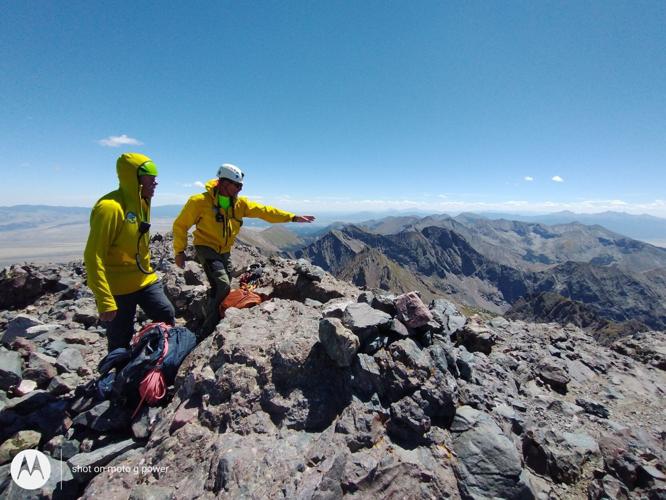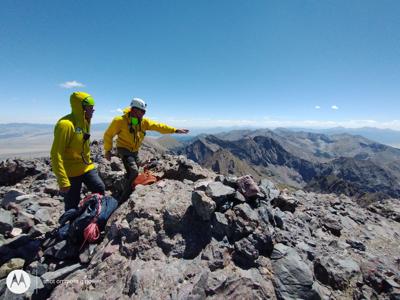Past sundown, at approximately 8:40 PM on Saturday night, Custer County Search and Rescue took command of a situation that had been unfolding on Colorado's notorious Crestone Needle, which had ultimately resulted in two climbers becoming lost on the 14,197-foot mountain. After taking the more difficult class five Ellingwood Arete route up the mountain, the climbers were unable navigate the standard class three route down climb in the darkness.
After contacting search and rescue, the climbers decided to stick it out on the mountain overnight, well-prepared with food, clothing, and survival gear, including bivy sacks. They hunkered down at approximately 13,850 feet above sea level.
At about 6 AM on Sunday, the climbers attempted to find the standard route down the mountain again, though ultimately failed. At this point, search and rescue inserted three team members into the field via a Flight for Life helicopter. They reached the climbers at about 1 PM and were able to safely descend the peak together, concluding the mission at 9 PM. All parties involved exited the field without injury.
This incident goes to show that Colorado's mountains can pose difficulties, regardless of the experience level of those involved. In this case, highly skilled climbers got off-trail and needed rescue, likely after much preparation.

Crestone Needle (14,197'; left) and Crestone Peak (14,294'; right) as seen from neighboring Humboldt Peak. Photo Credit: Spencer McKee.
Crestone Needle is a peak that's notoriously difficult to navigate, even when traveling the standard route. The class three downclimb on the standard route can be particularly hard to follow for those that did not ascend the same route – either summiting the peak via the infamous Crestone Traverse route or another option like the Ellingwood Arete climb or the class four standard route deviation.
Even after viewing images and videos of the descent, extremely rugged and steep terrain can have things looking very similar on the class three downclimb, making landmarks difficult to spot – especially in the dark. That being said, the cliffy and loose class three downclimb is safer than downclimbing other options, making this the best option for most if not rappeling.
Let's take a look at two big things these climbers did right:
1. They had a means of contacting search and rescue. This is crucial for expediting a response when things go wrong, especially in dangerous terrain.
2. They were prepared to stay overnight. They had extra resources and equipment to sleep, which allowed search and rescue to postpone operations until daylight – a much safer option.
While detail regarding route preparation wasn't released, it's likely that the climbers had done their research given how prepared they were in regard to other aspects related to the climb. It's unclear whether or not they were moving after nightfall or if they had already started to hunker down. Moving after nightfall on unknown, technical terrain is generally a bad idea as it makes route-finding much more difficult. Remember – a lot of the fourteener routes are surrounded by loose terrain and dangerous drops should one travel off-route.
Thanks goes out to the search and rescue team involved in this mission. Mountain climbing is a sport with inherent risks and it's fortunate that this mission was completed with everyone coming out of the field safely.
To those interested in supporting the search and rescue effort, purchasing a CORSAR card is a great way to do it. This is not any sort of insurance card, but it does help increase the likelihood that a county is reimbursed for their search and rescue efforts, something crucial to making sure teams have the right equipment and training available.
STAY INFORMED: Sign-up for the daily OutThere Colorado newsletter here










(0) comments
Welcome to the discussion.
Log In
Keep it Clean. Please avoid obscene, vulgar, lewd, racist or sexually-oriented language.
PLEASE TURN OFF YOUR CAPS LOCK.
Don't Threaten. Threats of harming another person will not be tolerated.
Be Truthful. Don't knowingly lie about anyone or anything.
Be Nice. No racism, sexism or any sort of -ism that is degrading to another person.
Be Proactive. Use the 'Report' link on each comment to let us know of abusive posts.
Share with Us. We'd love to hear eyewitness accounts, the history behind an article.